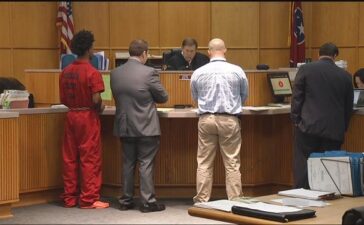Criminal court cases experience systematic strides to arrive at a decision:
1) the case is appointed to a government or state court dependent on the sort of wrongdoing
2) the litigant gets a legal counselor
3) an arraignment or bail hearing happens where the charges are perused and litigant enters a request of liable/not-blameworthy or no-challenge
4) groundwork for the preliminary happens where the guard and arraignment assemble proof
5) the preliminary happens where, at long last, a decision is conveyed and
6) an intrigue might be sought after if there is a liable decision.
There are endless a huge number of criminal court cases that occur in America consistently; and here are three sorts of criminal court cases that are, sadly, excessively inescapable.
Abusive behavior at home Crimes
Abusive behavior at home can incorporate brutal acts or rough dangers and can raise rapidly. Aggressive behavior at home wins in each city in each state in America. Ladies are normally the casualties related with aggressive behavior at home, to such an extent that the Bureau of Justice Statistics expresses that 1 out of each 4 ladies in the United States will encounter abusive behavior at home in the course of her life. Another upsetting measurement uncovers that in 2 out of 3 female crime cases, ladies are executed by a relative or personal accomplice. Men can’t be limited, nonetheless, since there are about 3 million physical attacks on men, consistently, who are engaged with aggressive behavior at home situations. Regardless of whether a case may include individuals who are blood-related, wedded, cohabitating or have kids together, homegrown wrongdoings convey colossal outcomes fiscally, truly, mentally and even socially when one thinks about that in any event 1/3 of families that are some portion of New York City’s family cover framework are destitute because of abusive behavior at home.
A couple of instances of exercises that can be some portion of aggressive behavior at home could incorporate dangers of brutality, attack, following, defensive request infringement and interference of a specialized gadget during the time abusive behavior at home might be occurring. Feelings run high in these sorts of cases and a conviction, commonly, comes down to the validity of the gatherings in question. Lamentably, inability to report this kind of maltreatment to the police inspired by a paranoid fear of response, for instance, and refusal to help out examiners (not consenting to affirm against the aggressor at preliminary) makes this sort of offense probably the hardest wrongdoing to effectively indict.
Controlled Substance Crimes
Once more, as indicated by the Bureau of Justice Statistics, medication and liquor misuse costs the United States in excess of a faltering $110 BILLION every year! In government and state criminal equity frameworks, most medication misuse cases start not from the genuine utilization of controlled substances yet from ownership or circulation of controlled substances including pot, cocaine, and anabolic steroids which animate muscle development.
The legitimate implications related with a conviction for dispersion and dealing of controlled substances can be sentences that go from 3 years in jail to life in jail. In a court of law, a head prosecutor must demonstrate that the charged individual purposely and purposefully had a controlled substance and didn’t have a substantial remedy for the medications being referred to. As would be normal, charges for ownership, alone, are commonly less genuine than accuses for ownership of the stiff-necked goal to appropriate.
Theft and Home-Invasion Crimes
A Home attack is ordered as a kind of theft and is typically rebuffed more seriously than different sorts of robberies. Robberies can be treated as crimes however, sometimes, they are consigned as wrongdoings, contingent upon the offense. Contingent upon the potential for harm, the legitimate discipline for a specific thievery is scattered, correspondingly. For instance, if the wrongdoing brought about somebody getting harmed or if the gatecrasher utilized a deadly weapon, the earnestness of the wrongdoing would be raised.









